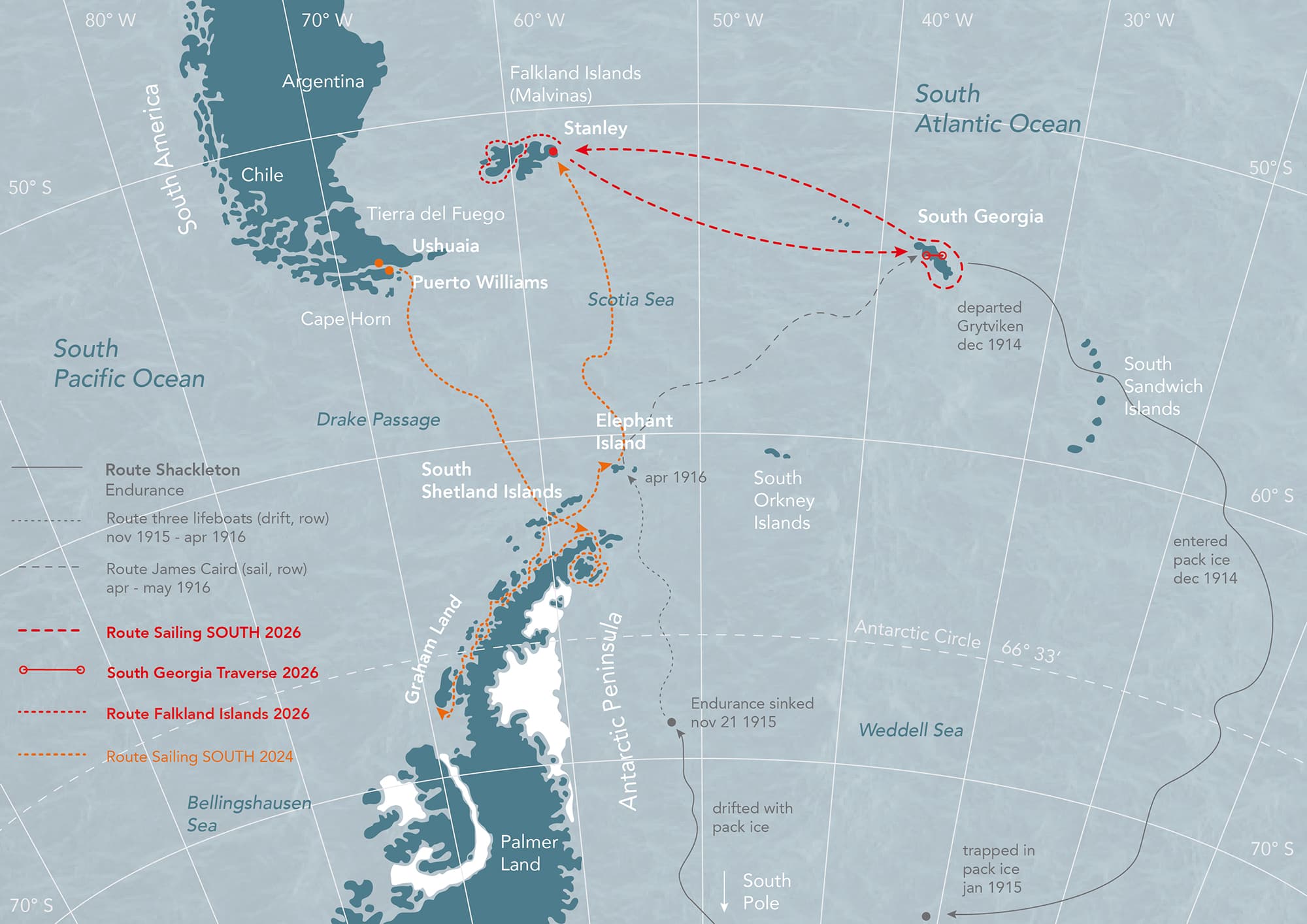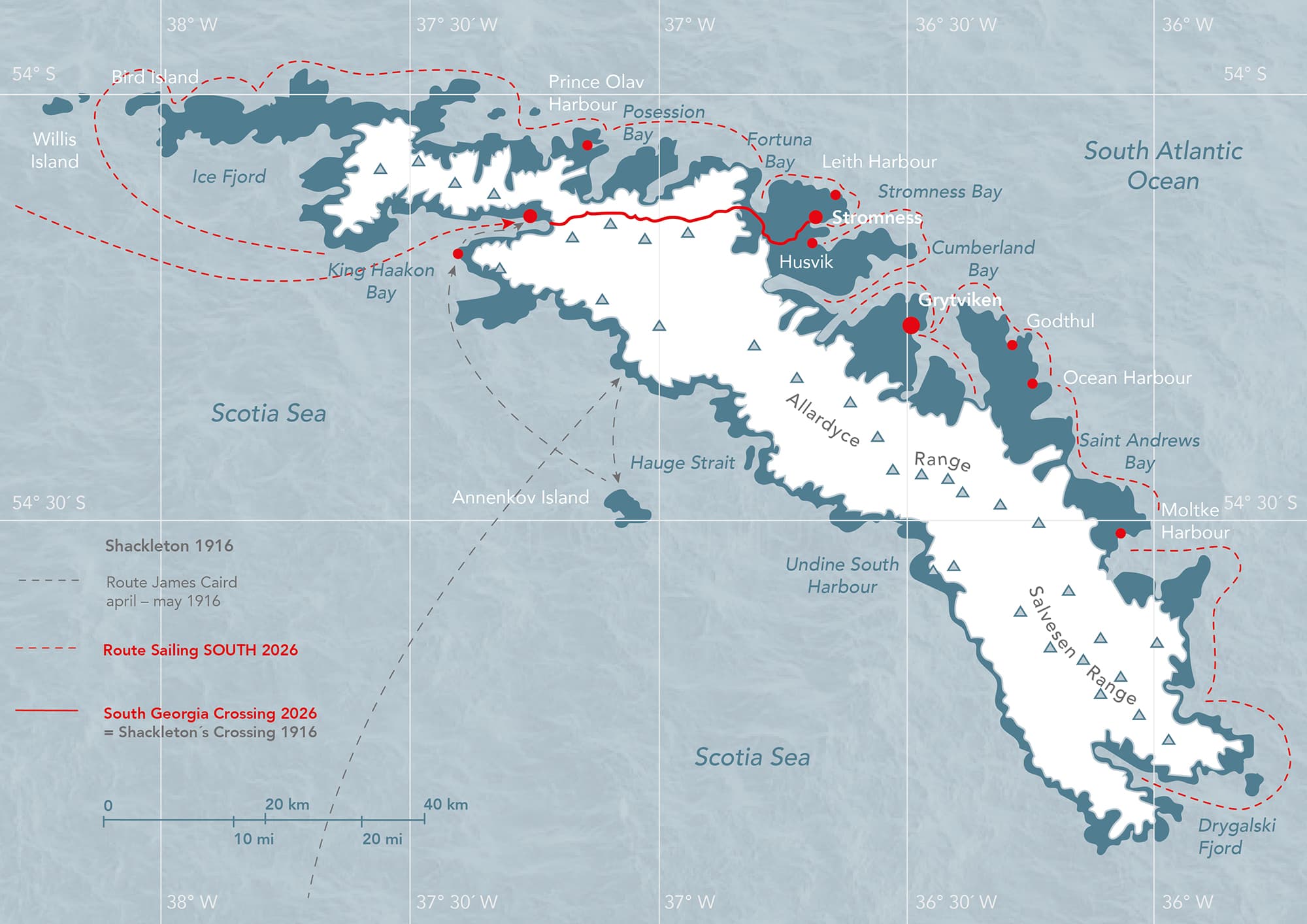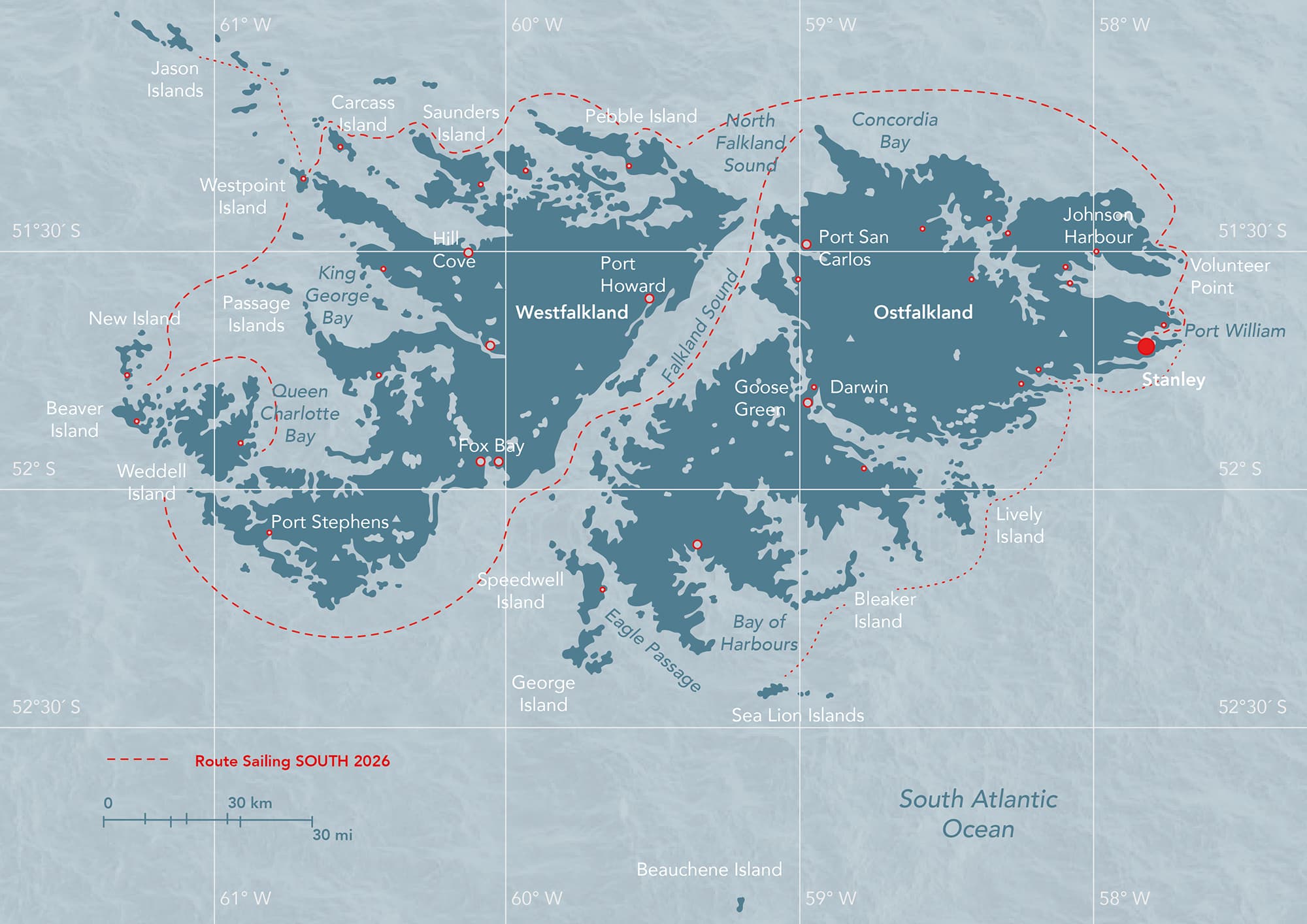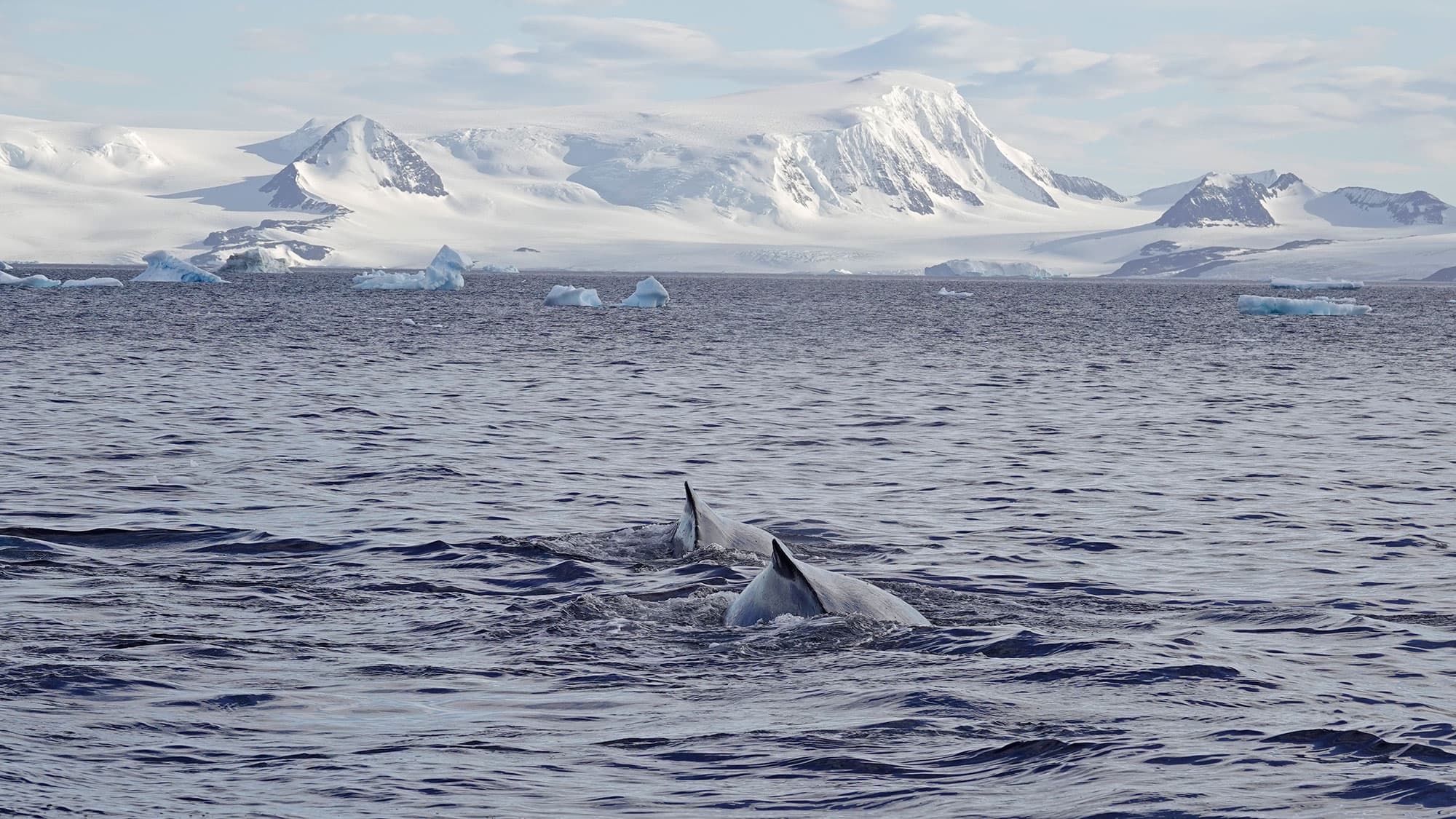Planned Route
Routes Sailing SOUTH

Route South Georgia

We explore the natural paradise of South Georgia mainly along the north-east coast of the island. The peaks of the Allardyce and Salvesen Range, up to almost 3,000 metres high, protect it from the strong Antarctic storms from the south and west. The almost completely glaciated south-west side is mercilessly at their mercy, offers hardly any protection and may not be approached for the most part.
The north-east coast is divided by several large bays and deeply indented fjords that offer good and sheltered anchorages. It is no coincidence that wildlife can be found here in the large colonies, nesting and breeding grounds of penguins, seals and seabirds. And both today’s human utilisation in Grytviken or King Edward Point, as well as the historical remains from the sealing and whaling times of the last century can be found on this coast.
During the ski expedition *, we also head for the rough, rugged and inaccessible south-west coast of South Georgia. Here the island is exposed to the stormy south-westerly winds and the rough Scotia Sea. We cross the island from King Haakon Bay, where Shackleton also went ashore. From there we follow his route on foot over the glaciated central mountains to Stromness, the now abandoned whaling station on the more sheltered north-east side. Here the Selma takes us back on board for further voyages of discovery or ski tours on the north-east coast.
* The ski expedition and crossing of South Georgia with guide Thomas Ulrich has been postponed indefinitely for organizational reasons.
Route Falklands

The port of departure and destination on the Falklands is Stanley, the capital on the east coast of the main island of East Falkland.
The sailing area around the Falklands is considered challenging due to strong winds and currents, as well as constantly changing weather conditions. These will therefore also dictate our route. There are more than enough fantastic destinations. The remote islands of West Falkland on the north and west sides of the archipelago in particular offer magnificent views of deserted, unspoilt nature, dramatic landscapes and encounters with an unparalleled wealth of wildlife.
It is not without reason that some legendary sailing icons of the high latitudes have settled here – far away in the rough South Atlantic. Perhaps we can even drop anchor with Jerome Poncet or Thies Matzen and Kicki Ericson to listen to their experiences on the world’s oceans and adventures in the Antarctic and South Georgia.
The routes shown above are a rough plan, one possibility of many. Apart from a few fixed points on the planned route, we decide our course and possible landings on the spot depending on the wind and weather. In the Southern Ocean and the (sub)Antarctic, nature alone sets the course. We don’t follow a rigid programme, don’t keep to any order and don’t tick off any bucket lists.
